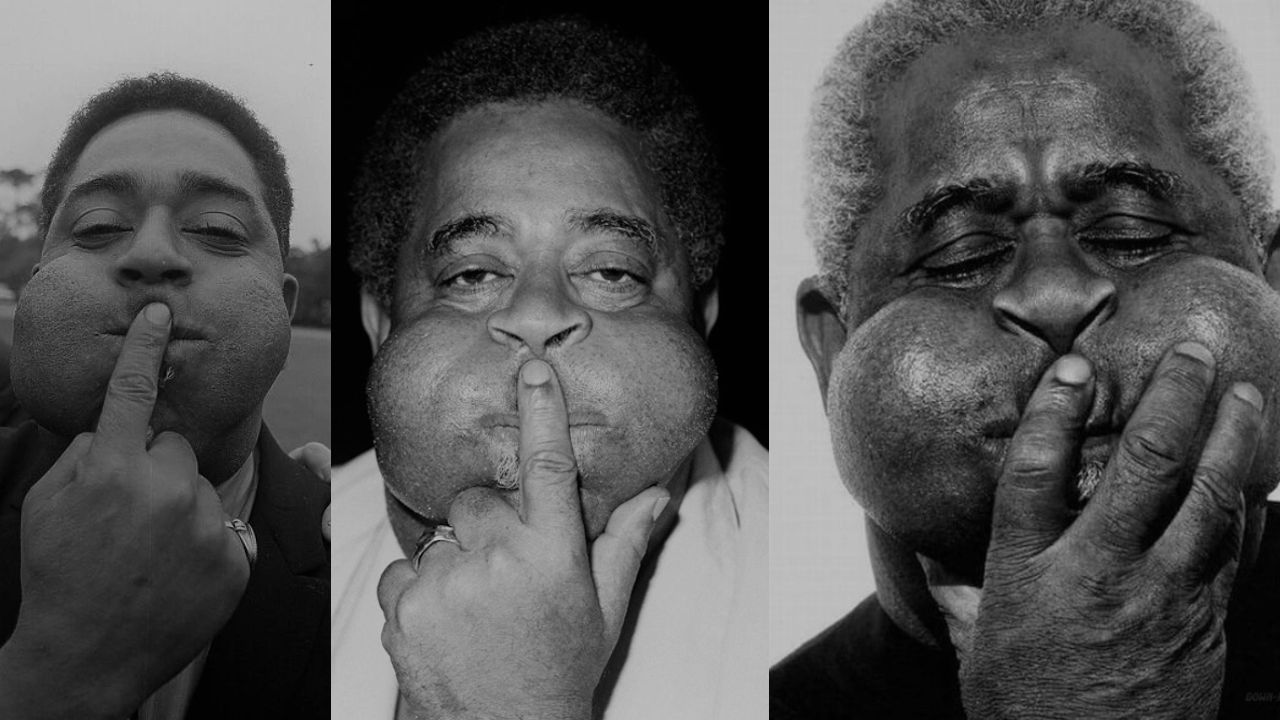For many people inside the world of jazz and outside it, Dizzy Gillespie remains the greatest trumpeter of all time, together with Louis Armstrong. He has become a key figure in the development of bebop, enchanted the audience with his playing technique, and entered the history as the musician using the bent trumpet bell. In today’s article, we’re going to shed a light on some key moments of Dizzy Gillespie’s creative journey and interesting facts about him.
- Dizzy Gillespie was born in 1917 in Cheraw, South Carolina, USA in the family of a bricklayer, who was also a part-time musician. Dizzy was the youngest of nine children. As his father, James, was an amateur bandleader, Dizzy was lucky to be introduced to the basics of a few musical instruments since an early age.
- Dizzy’s passion to become a Jazz musician was ignited one night when he heard Roy Eldridge, playing on the radio.
- After his father’s death, at the age of twelve, Gillespie taught himself how to play the trumpet and the trombone.
- Gillespie attended the Laurinburg Institute in North Carolina for two years. During that time, he participated in the band and took music classes.
- Playing in Frankie Fairfax’s band from Philadelphia was his first professional job. He started playing there when he was 18.
- Dizzy’s early style was greatly influenced by strong vibe from the trumpeter Roy Eldridge, who was his idol.
- Dizzy isn’t his birth name (actually he was John Birks Gillespie), he got nicknamed “Dizzy” because of his unpredictable character and style of performance.
- Gillespie recorded his first compositions, including the instrumental “Pickin' the Cabbage”, during his time in Cab Calloway's orchestra, which he joined in 1939. Back then, Dizzy started writing big band music for Woody Herman and Jimmy Dorsey. He also freelanced with a few bands, including Ella Fitzgerald's orchestra.
- His “Woody 'n' You” was featured in the first bebop recording session in 1944. This one and other Gillespie’s compositions “Groovin' High”, ”Salt Peanuts” had nothing to do with swing music, which was very popular during that period, as his music differed it both harmonically and rhythmically. "Salt Peanuts" is considered an anthem of bebop.

- Dizzy’s own orchestra was formed in the late 1940s, known as one of the finest large jazz ensembles. Its repertoire featured complex arrangements and instrumental virtuosity, combining the bop approach and Afro-Cuban jazz, which the musician himself called “Cubop”.

- Dizzy was a founding member of the Billy Eckstine Orchestra, including such outstanding musicians as Charlie Parker and Sarah Vaughan.
- Gillespie played a significant role in Afro-Cuban jazz style development, based on traditional Afro-Cuban rhythms. Together with Charlie Parker, Dizzy Gillespie was considered the founder of the bebop movement.
- Apart from being a great performer, Dizzy was an educator and mentor to many young musicians on the 52nd Street, including Miles Davis and Max Roach, who also became prominent figures in the genre.

- Dizzy Gillespie was known for his virtuosic trumpet playing and innovative technique. Inspired by Roy Eldridge's performance, Dizzy played music with rapid and complex runs, with ease and bold harmony, reaching into the highest registers of the trumpet range. The high-pitched trumpet style was a feature that set him apart as a key figure in the world of jazz.
- Gillespie popularized the interval of the augmented eleventh (flat fifth) – a characteristic feature of modern jazz. His improvisation included stock phrases, later incorporated by two generations of jazz musicians into their own solos.
- Dizzy Gillespie was known for his trademark bent trumpet bell, which was purely the result of an accident. It happened on January 6, 1953, at a party in a Manhattan club. Dizzy dropped his trumpet, and its bell got bent upward. He liked the sound so much that he had a special trumpet made with a 45 degree raised bell, which became a significant part of his image.

- Gillespie starred in a film called “The Winter in Lisbon” (2004).
- Dizzy has also a star on the Hollywood Walk of Fame, located at 7057 Hollywood Boulevard.
- When it comes to musical instruments, Dizzy is mostly associated with the custom-made Conn 18B "Dizzy Gillespie" trumpet, which he actively played throughout his career. Apart from that, he also played the Martin Committee, the custom-made King Silver Flair, and the Getzen Eterna.
- In 1989, Dizzy Gillespie was awarded one of the biggest civilian honors in the United States – the Presidential Medal of Freedom, for his contributions to American music.
- Dizzy was married to a dancer named Lorraine Willis, who he met in 1937 during his visit to Washington, D.C. Their marriage lasted until his death in 1993 at the age of 75.

- Dizzy had two funerals: one, at his request, for the closest friends and colleagues, and the other at the Cathedral of St. John the Divine in New York for everyone to attend.
- Dizzy Gillespie’s unique performance style and energy made his music a timeless and everlasting inspiration for many generations of jazz enthusiasts worldwide.



 https://kgumusic.com/pages/about-us
https://kgumusic.com/pages/about-us
3 comments
His mother was my father’s great aunt Mary Ann Yates Van Gogh Ritchie and his father was Louis Armstrong. There are many pictures of them embracing fondly. She was the artist Eastman Johnson’s granddaughter by his daughter Ethel Eastman Johnson with his second wife Elisabeth Buckley Waters Johnson. His first wife was Margaret Mc Keller the widow of John McKeller who had 3 kids when John was killed acting in the south as a spy. Eastman adopted James, John and Edmonia Lewis Mc Keller who Eastman trained as a sculptor. Margaret was Harriet Tubman’s daughter. They were all National Chief of Detectives Eastman’s spies on his underground railroad. Louis Armstrong was the son of James McKeller, Louis’s brother was Adam Clayton Powell Sr.
Me gusto mucho lo económico y puntual de la cita, gracias.
super merci